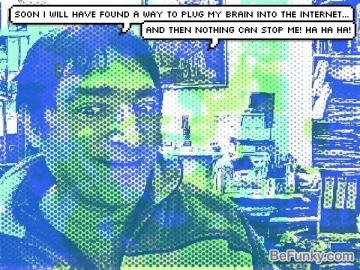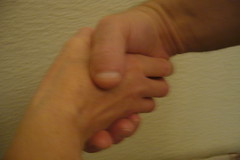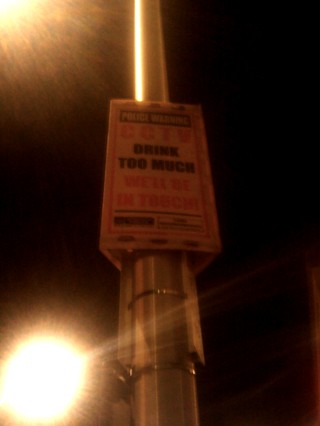This series, as explained earlier, is intended to give people a flavour of what Web 2.0 is all about in as non-technical a way as possible. This time we look at blogs.
I think it would be true to say that many people have heard of blogs and have a vague notion of what they are. What a lot of people struggle with, however, is the question: What's the point of them?
First things first. A blog, short for 'web log', is a kind of website where you can do four things very easily:
Firstly, you can write new content without much ado. Sure, you can write new content on an ordinary website, but that usually means thinking about what kind of editor you're going to use to do so, how to link the new page to the rest of the site or how to change the content on an existing page without messing up the formatting. When you set up a blog you can, if you like, not worry about anything like that until you want to start exploring the possibilities. You can often even update the blog by sending an email from a mobile phone, or a picture from a phone or a camera.
Secondly, you can get the word out very easily that you've updated the website. Often, the platform you use will automatically create an RSS feed, which is the means by which people find out there's been an update without having to visit your website itself just on the off-chance in order to check.
Thirdly, and this is key, the default setting in a blog is to allow people to comment on what you've written. That's what turns a website from a repository of content to an area where discussion is positively encouraged.
Fourthly, you can quickly publish your work to a potentially worldwide audience. You can do that through a normal website too, but having an RSS feed plus the commenting facility makes the idea of a global audience much more likely to be realised.
Setting up a blog is easy: just go to http://www,blogspot.com and follow the instructions, and you'll be up and running in less than 10 minutes. In fact, the hardest thing will be to think of a name for your blog.
But let's move on to the question of: so what? There are a number of ways in which blogs can be, and have been, used in education:
As a personal learning journal. If you're doing a course, such as an MA, you could use a blog to record papers you've come across and your thoughts on them. You can then refer to these notes -- which nobody else need see -- when preparing essays. You could do the same on paper, of course, but a blog is accessible from anywhere in the world, more or less, and you can't cut and paste URLs and references using pen and paper.
As a diary of feelings or events. This is, I believe, how blogging started in the first place: with people keeping a diary, a log, of their activities.
As a place to do some creative writing. Or just to think aloud.
As a place to show off, and easily update, your creative portfolio. That could be writing, artwork, photography -- you name it. Next time an editor requests a sample of your work, point them to your blog.
As a place to keep, and update, your CV (Resume). Not necessarily the whole thing, but for the headline roles you've had and skills you possess. Interested parties will ask for the 'real thing' if they like wht they see online.
As a means of keeping a group of students informed. If you have a blog to which you publish new links and assignments every week, students can access that from home, their library or even, potentially, their local shopping mall.
As a means of obtaining students' thoughts and feedback, either by giving them the access rights to write blog posts themselves, or by encouraging them to comment on yours.
As a means of engaging students, either to record what went on in the lesson (see, for example, The Scribe Post by Darren Kuropatwa)or as a means of encouraging kids to write.
If the idea of having your students blog appeals to you, look into ClassBlogMeister from David Warlick.
You'll also want to read the relevant sections in Coming of Age: An Introduction to the NEW Worldwide Web, and browse through the many projects in the Web 2.0 Projects Book, both of which can be found in the 'Free Stuff' area of this website.
And look out for the utterly fantastic updated version of the projects book and, if you're in London in January 2010, my seminar on the subject. You can read all about these wonderful developments in my original article in this series!











